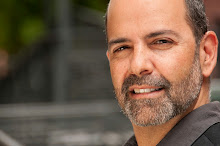I've now begun the tedious, methodical, and very exciting work of transferring my hundreds of hours of DV material to hard disk. I haven't purchased the TB drive -- yet -- but have a few hundred GB available on existing disks so I thought i'd start there, and check my system and workflow and naming conventions and usability first.
The process is vaguely reminiscent of 2004, when I got an iPod and finally bit the bullet and ripped all the hundreds of CDs I had into a dedicated hard disk. Back then the disk was around 20GB for all my music, but the tedious one-time conversion was similar. I'm motivated by how convenient it all is when everything is nonlinear.
I'm a few hours in, and loving the results. Transferred about 2 hours of tapes from Summer 2004, and already the family has enjoyed watching some of these clips on my laptop.
WORKFLOW:
Open Final Cut Express and then Capture. Name the reel with the reel ID (S04.06, for instance), and if the capture stops and restarts, I just append a "b" or "c" to the reel name. I have two folders on my destination drive -- a SOURCE and a MASTER folder. And I drop these 1-5GB files into one or the other. I don't care about the FCE project -- it's just a means to an end. What I want is the Quicktime media file.
Most the tapes are already logged, but for those that are not, the capturing time is a great moment to log them.
I thought for a long time about using iMovie for this, instead of Final Cut, but in the end rejected it. Simply because it's not so hot for editing my sketches, and there are some small settings that need to be tweaked in order to have clips interchange easily with FCE... and mostly because i don't want everything broken into "events" when i have hundreds of hours of video, with lots of coverage... it just didn't seem like the right tool for the prosumer. If I was mostly shooting little clips, only had a few hours of tapes, and i didn't plan on ever editing this stuff, i think iMovie would be perfect. The best thing about it is the ability to read the datacode and know WHEN a clip was recorded. It's a great feature and i'm disappointed FCE can't do it.NAMING:
The S04.06a naming is working nicely (I actually use a lowercase "s" for clarity). Because FCE loses the datacode, I must rely on the tapelogs to really know what is where. But once the material is in a quicktime file -- it's so easy to peruse and skim -- the logs are important but when i find parts i want to edit, it will be easy.
If all goes to plan, I'll purchase a 1TB drive within the month, and continue with the process. These drives are large and require power, and thus are not particularly portable (they are mobile, but that's not quite the same as something you want to lug around with your laptop). For my existing tapes, I'll need about 2TB. For the ongoing shooting, I think i'll need an additional 12 hours per year, or maybe 150GB per year. the 2TB will suffice for another year or two, and by then i can re juggle depending on what drives cost. If the price per GB drops significantly in 18 months, I don't want to over purchase now.
THE BIG QUESTION:
If i'm doing this now, and love having clips in a nonlinear format, why wouldn't i recommend a beginner today skip the DV tape and go directly to a memory stick or HDD and dump clips into the computer hard disk? (Which I explicitly do NOT recommend in the updated Little Digital Video Book.)Answer: Digital video is still very large, and rapidly fills up marginally-expensive hard disks. If you are just starting out, i don't think it's wise to force yourself to buy a lot of new equipment that you might not need. And while i'm dumping video into the disk, i'm comforted that all the video is backed up by the original tapes. If I dumped it directly from memory stick or HDD, there would be no back up archive, and I find that situation hard to recommend. And I'm not going to tack on the need for a RAID set up to back up your hard disks. Not on day 1.
No, if you're just starting out -- and still want to see if this is for you, want to have a very maleable format, high quality, good for learning, very inexpensive, and still convertible to a hard disk at any time in the future (in 6 months or 2 years) when many of today's problems will both be solved and use far less expensive alternatives.
For prosumers who are already shooting and editing, then it might be okay - and then the only consideration is the conversion process from your cassettes, and the required size of a hard disk. These aren't the readers of the LDVB. Maybe I should write a separate book for advanced users, but they probably don't read books. Maybe they'll check out this blog...


